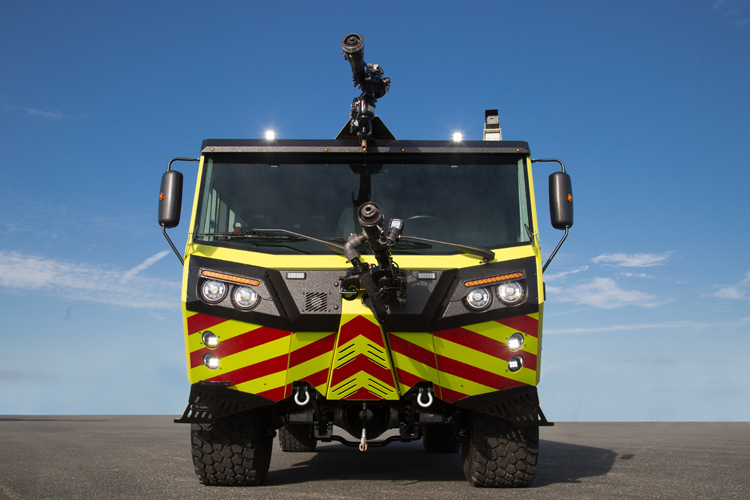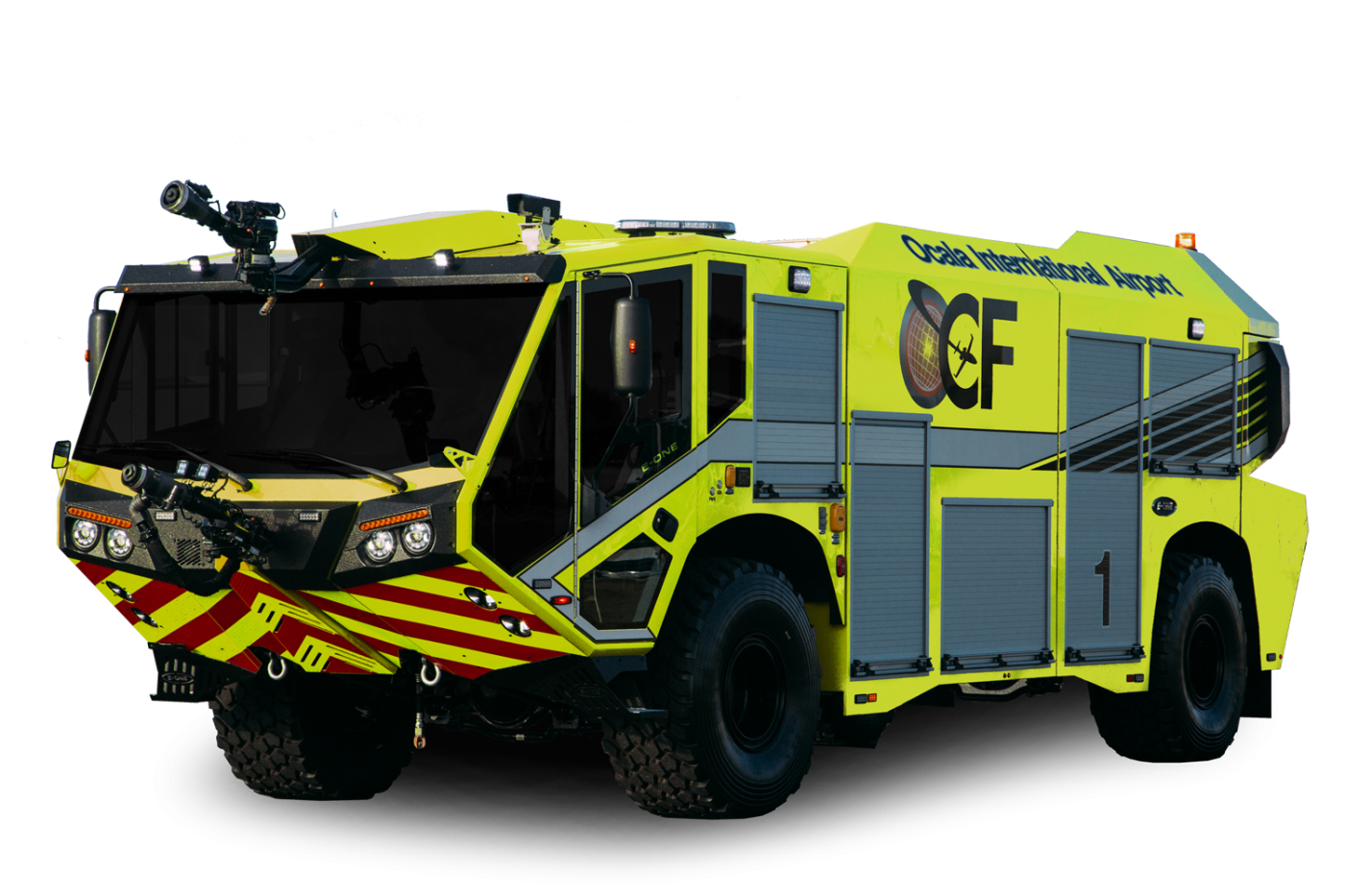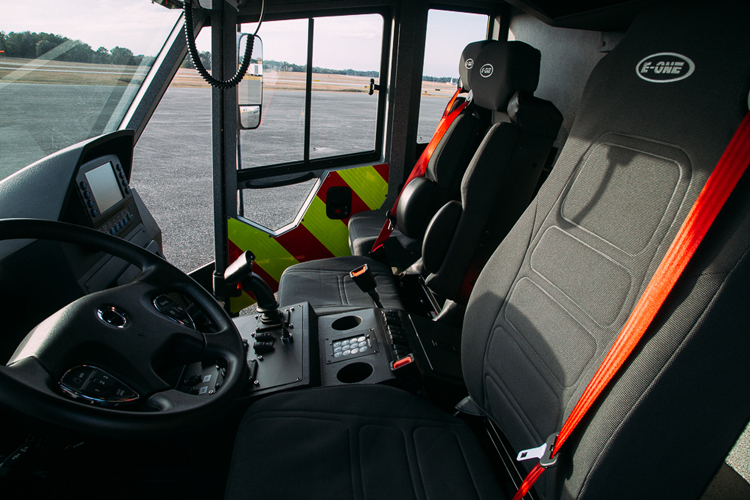
When you start to consider purchasing a new aircraft rescue and firefighting (ARFF) vehicle, what should you consider when writing a vehicle specification? If you are looking at purchasing a new vehicle, you should have a good understanding of apparatus design, manufacturing, and fireground operations. To make this process easier, I want to provide the top 5 items that should be considered and addressed during the bid spec writing process.
- How will your new ARFF vehicle be funded?
- How do you contact the Federal Aviation Administration (FAA) for funding assistance?
- How many vehicles are required to protect your airport?
- What size vehicle is required to meet the airport certification manual (ACM)?
- What do you expect from the manufacturer regarding sales, service and support?

Working through an Airport Improvement Program (AIP) Vehicle Acquisition
The ARFF fire chief must determine whether this project will be assigned to a specific person or if a vehicle committee be established for the purchase. If you choose a committee, you can draw on different degrees of experience and expertise from the group. In my experience using a vehicle committee, you should assign specific tasks to different members to be researched. Like power drive train, the fire suppression pump system, the extinguishing agent(s) and/or supplemental fire tools/equipment. The delegation of these features allows each individual person to invest his time in the desired research area. When you assign specific tasks during the process, it often eliminates finding deficiencies or critical errors once the vehicle has been completed.

How Do You Contact the FAA Regarding Funding?
The ARFF Chief should reach out to his or her airport operations manager for assistance with contacting the FAA. The airport operations and management department work closely with the FAA on many different FAA-funded projects. The FAA has regional and national people who can assist airport fire chiefs or airport managers with AIP-funded purchases. The FAA safety compliance officer assigned to your local airport can be a big asset and will most likely give final approval for any requests. I suggest referencing the FAA Advisory Circular AC 150/5220-10E (2011), the mandatory Guide Specification for Water/Foam Aircraft Rescue and Firefighting Vehicles, which must be used if FAA funding is being used. The purpose of this document is to define the performance standards, specifications, and recommendations for the design, construction, and testing of ARFF vehicles. The link to the (AC) can be found here:
Determining the Number of Vehicles Required
The Federal Aviation Regulation (FAR) Part 139 manual is a document that will determine the size, type, and number of ARFF vehicles required for your airport. The index is determined by a combination of the maximum length of the commercial passenger aircraft and the average daily departures of said aircraft. The number and size of ARFF vehicles and equipment shall be determined by the airport’s FAR index.
Reaching Out to the Professionals
It is to your advantage to contact as many manufacturers as possible regarding this type of vehicle acquisition. Ask the manufacturer if it is aware of any options or features not included in the current AC that could be fundable by the FAA.

Sales, Service, and Support Considerations
After-the-sale service and support can be a very important matter. In the structural firefighting world, when a fire apparatus goes out of service, fire chiefs often adjust their run cards using mutual aid from a nearby community. In the case of a FAR Part 139 airport, emergency apparatus downtime is limited. It limits ARFF vehicle downtime to a maximum of 48 hours. 139.319(g)(3) states, “Any required vehicle which becomes inoperative to the extent that it cannot perform as required shall be replaced immediately with equipment having at least equal capabilities. If replacement equipment is not available immediately, the certificate holder shall so notify those FAA’s Regional Airport Division Manager and each Air Carrier servicing the airport in accordance with sub-section 139 339. If the required index level of ARFF capability is not restored within 48 hours, the airport operator unless otherwise authorized by the Administrator, must limit air carrier operations on the airport to those compatible with the index corresponding to the remaining operative rescue and firefighting equipment.” With this mandatory requirement, it is critically important to consider manufacturer reliability and after-the-sale support. It is highly recommended that you demo new ARFF apparatus and seek out nearby airports who have recently purchased new ARFF apparatus.
Lead Time to Delivery
Perhaps one of the most important but often overlooked considerations is the standard lead time for this type of specialized vehicle. It can take upwards to 300 calendar days from the time a manufacturer receives the purchase order until the vehicle is actually delivered. This is a critical consideration to be given should you seek federal assistance and to allow sufficient time for manufacturers to bid on your specification.

Important Steps to Consider When Developing the Committee
Whether you are working on this project alone or as one member of a new vehicle purchase committee, it is important that you follow these easy steps:
- Establish a committee chairperson.
- The group MUST define the scope of the project.
- Set your vehicle committee goals (wish list).
- Establish a timeline for meetings, research, and reporting.
- Set future meeting times with consideration to the workload.
- Debate, define, and make changes and/or additions in writing.
- Document the process; establish a final spec in writing for the project.
Developing a Preliminary Rough Spec
Once the draft specifications incorporating all the changes have been completed, send copies of that document to the FAA district office and to manufacturers for their preliminary comments prior to issuing a formal bid package. Providing the opportunity for the FAA and the manufacturers to review the preliminary specs may minimize or eliminate potential protests.
The bid specifics (verbiage) often get fire departments in trouble when they require a specific component that another manufacturer simply cannot provide. That, in turn, looks like the spec was written specifically for one manufacturer. Also note that if you fail to request manufacturers’ input about what they can or cannot provide, you may have unintentionally excluded them from the competitive bidding process. That can be a legal no-no. Once you have received manufacturers’ feedback on your draft spec, this allows the committee an opportunity to revise the specifications. (if changes are appropriate).
When the vehicle committee is happy with the final draft of your specifications, I recommend that you assign a third party to compare the “technical specifications” that must comply with the FAA AC and/or any local, state, or federal requirements. The third-party person could be an employee of the fire department or someone from the airport administration who has experience dealing with AIP-funded projects. Once you have a solid bid spec, ask your airport administration to forward said bid spec to the FAA for its final approval.

Bid Opening Procedures
At bid opening, good documentation is critically important. Remember, make copies of all correspondence throughout the entire bidding process. Upon FAA approval of your bid spec, advertise your intentions to accept requests for proposals; you can send an official copy to all interested or potential manufacturing companies if you so desire. You should allow at a minimum of 30 calendar days but I highly recommend 90 days between the time you send the invitation to bid and the actual date for the bids to be opened. This provides each manufacturer with sufficient time to fully prepare a competitive bid proposal.
On the date of the bid opening, you should invite representatives from all parties that submitted bids to attend. When you open each bid, the moderator should read the manufacturer’s name and its bid price. This is all that is required to be announced in public session. You do not have to announce all of the individual specifications of the bid. The fire chief, members of the new vehicle committee and anyone else concerned with the purchase should attend the opening process. Manufacturer representatives may be present to review other competitor’s proposals as well. After the individuals responsible for making the final decision have determined who will be awarded and that the bid meets the invitation-to-bid spec and FAA A/C 150/5220-10E, an award can be officially issued, subject to FAA agreement.
WILLIAM GREENWOOD is a 25-year veteran of the fire service. He is currently the assistant fire chief of training at the Manchester-Boston Regional Airport. He is a senior staff instructor for the New Hampshire Fire Academy and owns FETC Services, which provides advanced firefighter and leadership training/consultation services. He is also a national speaker for FDIC International and has been published in Fire Engineering and FireRescue.

